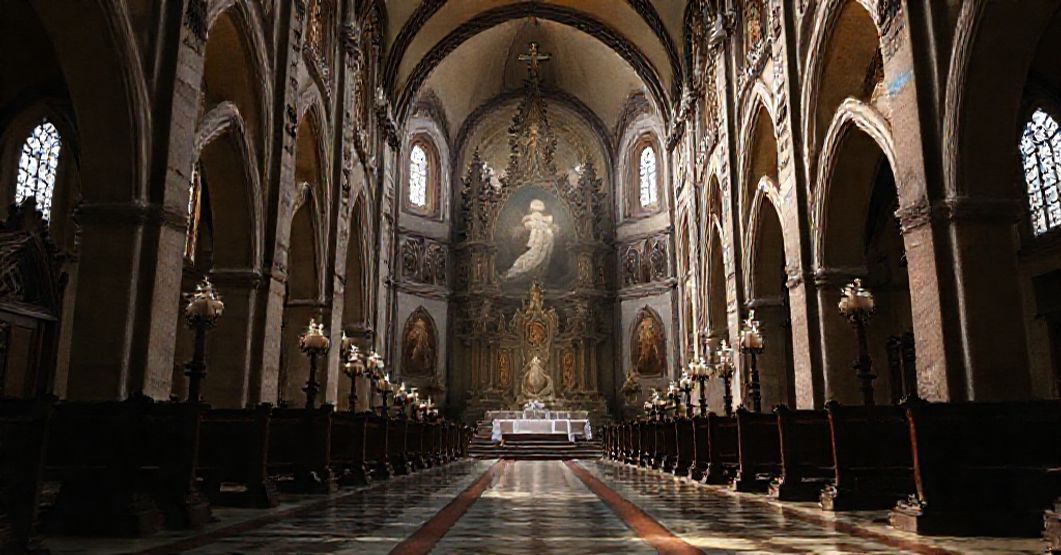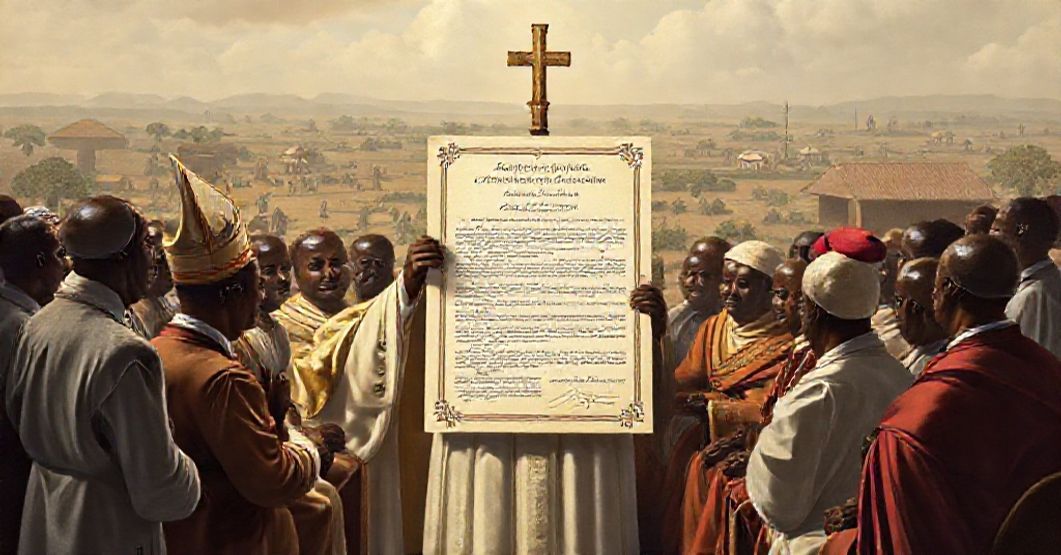Antipopes of the Antichurch



















Timeline of this heretical pontiff
Encyclical Letters
+ 15 posts1959
+ 7 posts1961
+ 4 posts1962
+ 2 posts1963
+ 2 postsApostolic Exhortations
+ 3 postsApostolic Constitutions
+ 93 posts1958
+ 6 posts1959
+ 87 postsMotu Proprio
+ 15 posts1958
+ 1 posts1959
+ 1 posts1962
+ 11 postsApostolic Letters
+ 151 posts1958
+ 4 posts1959
+ 63 posts1960
+ 78 posts1961
+ 1 posts1962
+ 4 posts1963
+ 1 postsSpeeches
+ 99 posts1958
+ 2 posts1959
+ 26 posts1960
+ 29 posts1961
+ 16 posts1962
+ 24 postsMessages
+ 6 posts1959
+ 4 postsHomilies
+ 4 postsLetters
+ 152 posts1958
+ 1 posts1959
+ 48 posts1960
+ 32 posts1961
+ 31 posts1962
+ 30 posts1963
+ 10 postsNot categorized
+ 1 posts1958
+ 1 postsNews feed


Catholica Polonia (1960.05.20)
The document issued by antipope John XXIII on 20 May 1960 concerns the diocesan cathedral of Sandomierz dedicated to the Nativity of the Blessed Virgin Mary, praising Poland’s historical fidelity to Rome, recalling the church’s medieval origins and distinguished canons, and elevating this cathedral to the rank and title of Minor Basilica with the usual juridical privileges, supposedly as a mark of Apostolic benevolence and Marian honour. In reality, this short act is a polished seal affixed by a usurper to cloak the conciliar revolution with the prestige of Marian devotion and Polish Catholic memory, while preparing to demolish the very faith and liturgy that built that sanctuary.


Quemadmodum Apostolici (1960.05.03)
The apostolic letter attributed to John XXIII under the title “Quemadmodum Apostolici” announces, in a brief bureaucratic formula, the erection of an Apostolic Delegation for the territories of Madagascar, Réunion, and Mauritius, with its see at Tananarive, granting it the typical competencies, privileges, and indults of such delegations, and declaring the act firm and valid “in perpetuum.”


EO INTENDENTES (1960.05.03)
EO INTENDENTES is a brief Latin act of John XXIII that:
– suppresses the previous title “Delegatio Apostolica Africae Orientalis et Occidentalis Britannicae,”
– renames it “Delegatio Apostolica Africae Orientalis,”
– and redefines its territorial scope to cover Sudan, Kenya and Zanzibar, Uganda, Tanganyika, Northern Rhodesia, Nyasaland, French Somaliland, and Seychelles,
all “to promote and govern” missionary work so that peoples “may be led” from “pagan superstitions” to the knowledge and worship of the one true God and aggregation to the Church.
This seemingly administrative text, signed “motu proprio, certa scientia ac matura deliberatione” by John XXIII, is in reality a juridical brick in the construction of the conciliar sect’s colonial apparatus in Africa, cloaking an approaching revolution of apostasy under vestiges of missionary zeal.


Ad universae Ecclesiae (1960.05.03)
The document attributed to John XXIII under the title “Ad universae Ecclesiae” (3 May 1960) announces, in brief and technocratic Latin, the erection of an Apostolic Delegation for “Western Central Africa” with its See in Lagos, to which are assigned Nigeria, Cameroun, Gabon, Oubangui-Chari, Tchad and central regions of the Congo, all under the jurisdiction of the Congregation of Propaganda Fide, presented as a prudent step to foster the growth, organization, and governance of local ecclesiastical structures in mission territories. The entire text masks, under a veneer of canonical formality, the consolidation of a new para-structure that would soon serve as an instrument for the conciliar revolution and the dismantling of the integral Catholic mission in Africa.
Varia
Announcement:
– News feed –implemented
– Antipopes separate web sites with their all documents refutation – in progress
